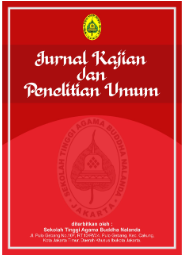Children's Library with Behavioural Architecture Approach in Medan City
DOI:
https://doi.org/10.47861/jkpu-nalanda.v2i5.1285Keywords:
Behavioral Architecture, Children's Library, Educational, Literacy, RecreativeAbstract
These days, literacy-based child advancement is exceptionally vital and a quality program. During their development period, children and youths require excitement and an environment that can fulfill their physical and mental needs according to their age. The need for a perusing culture in Indonesia is caused by low levels of education in children and young people, causing human assets in Indonesia to be uncompetitive due to a need for science and innovation aptitudes. One quality that can be used to energize interest and make strides is proficiency in understanding current formative needs, not as it were through print collections but through very advanced collections. Perusing books from an early age creates a child's creative energy and positively affects their level of inventiveness, presently and in the future. In any case, there is no set to encourage it, so it is vital to construct a children's library in Medan City, which is anticipated to be a casual instruction center with the capacity to organize and encourage cognitive exercises and potential educational abilities, learning resources and play facilities with a climate that's able to specific instructive, inventive, communicative and engaging characters.
References
Ahjuri, K. F. (n.d.). Psikologi perkembangan: Pendekatan sepanjang rentang kehidupan (Lukman, Ed.). Penebar Media Pustaka. Retrieved March 8, 2024, from https://repository.iainponorogo.ac.id/489/2/LAYOUT%20Buku%20Kayyis_cetak.pdf
Ayubi Syam, A. Al, Danial, M., & Sudding. (2019). Pengembangan bahan ajar elektronik science flashbook mata pelajaran IPA kelas VIII SMP pada materi pokok partikel. Chemistry Education Review (CER), 2(2), 1. https://doi.org/10.26858/cer.v2i2.8671
Badan Pusat Statistik (BPS). (2022). Jumlah penduduk Kota Medan menurut kelompok umur dan jenis kelamin (jiwa), 2020-2022. Retrieved from https://medankota.bps.go.id/indicator/12/102/1/jumlah-penduduk-kota-medan-menurut-kelompok-umur-dan-jenis-kelamin.html
Dinas Perpustakaan dan Kearsipan (DPKA). (2020). Perpustakaan di Kota Medan. Retrieved from https://disperpustakaanarsip.pemkomedan.go.id/about.php
Faisyah, R. (2019). Konsep arsitektur rekreatif dalam perancangan perpustakaan di Kota Baru Parahyangan (KBP) Kabupaten Bandung Barat. Jurnal Arsitektur TERRACOTTA, 1(1), 57–67. https://ejurnal.itenas.ac.id/index.php/terracotta/article/download/3374/2175
Organisation for Economic Co-operation and Development (OECD). (2023). PISA 2022 results (Volume I). OECD. https://doi.org/10.1787/53f23881-en
Organisation for Economic Co-operation and Development (OECD). (2023). “What is PISA?”, in PISA 2022 assessment and analytical framework. OECD Publishing. https://doi.org/10.1787/dfe0bf9c-en
Peraturan Daerah Kota Medan Nomor 1 Tahun 2022. (n.d.). Retrieved March 8, 2024, from https://drive.google.com/drive/folders/1wi7xbFtw-s9NSxnfvoq-gyLWU_-xCfl_
Permata Nurkamalina, O., Hardiana, A., & Pramesti, L. (2018). Penerapan arsitektur perilaku pada perancangan sekolah kreatif di Surakarta. Jurnal Arsitektur, 1(2).
Pribadi. (2024). Hasil analisa.
Pusat Penelitian Kebijakan Pendidikan dan Kebudayaan (Puslitjakdikbud). (2019). Indeks aktivitas literasi membaca 34 provinsi (L. Solihin, Ed.; pertama). Pusat Penelitian Kebijakan Pendidikan dan Kebudayaan, Badan Penelitian dan Pengembangan, Kementerian Pendidikan dan Kebudayaan. https://litbang.kemdikbud.go.id
Downloads
Published
How to Cite
Issue
Section
License
Copyright (c) 2024 Raihanah Zahra Damanik, Dwira Nirfalini Aulia

This work is licensed under a Creative Commons Attribution-ShareAlike 4.0 International License.








